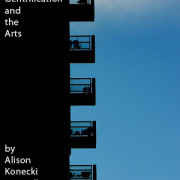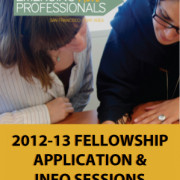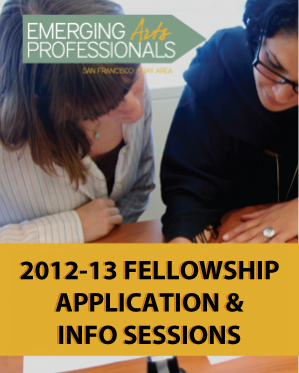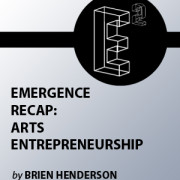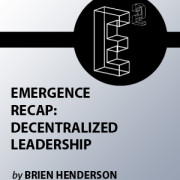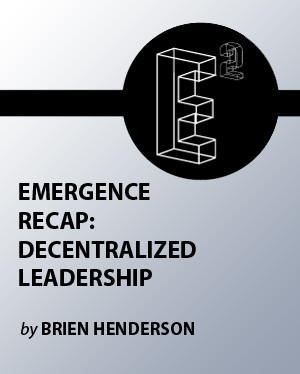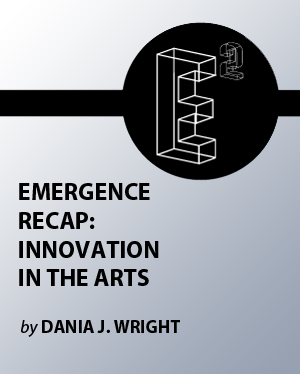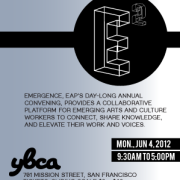 Emergence, EAP’s day-long annual convening, provides a collaborative platform for emerging arts and culture workers to connect, share knowledge, and elevate their work and voices.
Emergence, EAP’s day-long annual convening, provides a collaborative platform for emerging arts and culture workers to connect, share knowledge, and elevate their work and voices.
Monday, June 4, 9:30am-5pm
The Forum at the Yerba Buena Center for the Arts
701 Mission Street, San Francisco
Tickets: Sliding scale $0 – $40 (or more). Register/Purchase via Eventbrite
Coffee and pastries, snacks, and wine (4pm) provided. Lunch will be available for purchase.
Note: select sessions will take place at the Contemporary Jewish Museum, 736 Mission Street. Please see the schedule below for details.
Participants and supporters of the SF Bay Area arts and culture sector are invited to join in a day of panel discussions, workshops, presentations (Artistic & Non), moderated forums, and other interaction platforms.
Emergence brings together the EAP network to engage in discussions around the most exciting, challenging, and urgent issues for next generation arts and culture workers. Through workshops and forums, the event will elevate the work and voices of the EAP Fellows and the EAP network, facilitate the building of meaningful relationships, and gather ideas for future EAP projects and programs.
Key topics interweaved throughout the day include: working in a networked way, creative placemaking and the civic engagement of artists, career trajectories in arts and culture, and the sustainbility and growth of the arts ecosystem. These topics are addressed through discussion of everyday tools and skills, organization-level planning, and field-wide concerns.
As a principle, the day is intended to breathe life and energy into the ideas that have emerged via the EAP Fellowship, programs and network, as the most powerful and fruitful. It will be a highly interactive, creative, and collaborative day, that will include performance and project showcases by the EAP Fellows. Participants are invited to attend any portion of, and encouraged to partake in all of, the day’s events.
Schedule
Click buttons by each session topic for more details and speaker bios
9:30-10a COFFEE & NETWORKING
10-11a MORNING PARALLEL SESSIONS
Mission-based Media Planning • Stephen Gong, Ian Smith-Heisters, Jake Levitas; moderated by Michael DeLong (YBCA Forum)
How can resource-strapped arts organizations develop tech and media projects that stay within both mission and budget? This action-oriented session seeks to provide answers through sharing of successes and failures, and the development of a community of nonprofit arts technologists. Michael DeLong (TechSoup) will moderate the discussion with an eye towards pragmatic approaches: Stephen Gong will share stories from CAAM’s community-building interactive projects; Jake Levitas will discuss the processes used at Gray Area Foundation for the Arts in their development of creative applications for social good; Ian Smith-Heisters will outline an approach to technology projects borrowing from agile software development, and his experiences as a contractor for Pivotal Labs, Howcast, and community arts organizations.
Attend if you want to: learn about best practices for managing tech projects; share your tech stories; boost your organization’s tech development efforts; develop your network of arts technologists
Panelists
Michael DeLong is the Online Community Manager for TechSoup Global. In this role, he oversees a thriving online community gathered around nonprofits and technology. Michael is also a freelance writer and publicist focusing on the arts, events, nonprofits, and small businesses. His passion for nonprofits arts and communications has led him to hold seats and leadership positions on boards and committees for galleries and organizations, and to speak about social media at conferences. Michael holds a BA in the History of Art from the University of California, Berkeley.
@MichaelDeLongSF
Stephen Gong is the Executive Director of the Center for Asian American Media. Stephen joined CAAM after working for 18 years at the University of California, Berkeley Art Museum and Pacific Film Archive, most recently as Deputy Director. Previously, he held positions at the National Endowment for the Arts in Washington, D.C. He has been a lecturer in the Asian American Studies program at UC Berkeley, where he developed and taught a course on the history of Asian American media.
@caamman
Jake Levitas is Research Director at Gray Area Foundation for the Arts, where he manages GAFFTA’s leading research program dedicated to creative applications of technology for social good. This program centers on exploring cutting-edge applications of digital art and media, as well as uses of technology to address key urban issues such as sustainability, transportation, art, public health, and community engagement with a wide array of partners and stakeholders. As a designer and organizer, his work is focused at the intersection of design, technology, cities, and information, and has been featured in The New York Times, The Associated Press, The Atlantic, GOOD, Mashable, Fast Company, Design Observer, and other international outlets.
@civicinnovation
Ian Smith-Heisters works as a creative coder, software development leader, and dancer with client/collaborators ranging from Anna Halprin and Camille Utterback to Pivotal Labs and The Sundance Institute. His work takes the form of interactive video installations, data visualizations, large-scale web platforms, and dances–all with a deep concern for community, human relation, and sustainability.
@heisters
Models for Delivering Research Towards Impact • facilitated by Kiley Arroyo and Adam Fong (YBCA Screening Room)
Who defines the research agenda in the arts? This discussion seeks to identify the driving forces and voices behind arts and culture research. We’ll demystify the research and publication process by building answers, with participants, to two essential questions: 1.) Where does community engagement fit within the research process? and 2.) How does research drive changes or create impact in the sector? The session will encourage participants to offer their diverse perspectives and experiences, from studies of local communities to nationwide and international initiatives, in a discussion of how research relates to the daily efforts of arts and culture workers.
Join this conversation to connect with current arts research, share your opinions on the evolving policies that shape our work, and to help integrate our arts network across the spectrum from academic researcher to front-line practitioner.
Facilitators
Kiley Arroyo is a San Francisco-based research consultant. She is currently a research fellow with the Foundation Center and the Hauser Center for Nonprofit Management at Harvard University. Kiley has been intimately involved with American, European and Middle Eastern arts & culture, nonprofit, philanthropic and government organizations for the past fifteen years. She has developed a rich understanding of comparative cultural policy, social sector research, management strategy, and philanthropy. She has led engagements for a diverse range of organizations including: UNESCO, Demos, McKinsey & Company, Museo Centro de Arte Reina Sofía, the Arts Council England, Stanford University, University of Chicago, Living Cities, the Marin Community Foundation, the Royal Shakespeare Company and the Netherlands Architecture Institute, among others. She has served on grant review panels for the National Endowment for the Arts and multiple family foundations. Kiley holds an MA in Cultural Policy and Management, from University College Dublin, a BA in Art and Architectural History and a minor in Public Administration from the University of Oregon.
Adam Fong is Director of Emerging Arts Professionals and was a co-founder and member of EAP’s original Steering Committee; he served also as Business Development Chair in 2010-11. Adam has worked as a composer, performer, and producer of new music since completing his MFA at California Institute of the Arts (Music Composition). As Associate Director of Other Minds from 2006 to 2012, Fong produced the annual Other Minds Festival, dubbed the “premier new music festival on the West Coast” (Los Angeles Times), and many special projects including the CD reissue of Conlon Nancarrow’s Studies for Player Piano, tribute concerts to Ruth Crawford Seeger and Henry Cowell, and the American Premiere of 18 Microtonal Ragas based on “Solo for Voice 58″ by John Cage. His own compositions have been performed internationally in Auckland, London, Berlin, Tübingen and Darmstadt, at many US universities, and throughout California, by performers including the two-piano team Dennis Russell Davies and Maki Namekawa. Adam also holds a master’s degree from Stanford University (English), and has served on a variety of panels and committees at both the local and national level.
Decentralized Leadership and Managing Creativity • Todd Brown, Charith Premawardhana; moderated by Mari Chang (Contemporary Jewish Museum, 736 Mission Street)
This roundtable discussion draws on the experiences of Todd Brown, founder of the Red Poppy Art House, and Charith Premawardhana, founder of the original Classical Revolution, to demonstrate alternative models of leadership. Moderator Mari Chang will facilitate a highly participatory discussion on the unique opportunities and challenges inherent to non-hierarchical leadership in arts organizations. Share your own stories, and learn how, amidst the difficulties of managing creatives, these panelists have learned to redefine conventional notions of “artistic integrity” and “artistic success.”
Panelists
Multidisciplinary artist and cultural connector, Todd Thomas Brown’s experience spans 20 years of integrating artistic disciplines and small-scale arts presenting within the context of community cultural development. In 2003, Brown founded the Red Poppy Art House, and seeded the Mission Arts & Performance Project (MAPP). In 2007, together with Meklit Hadero, he co-founded the music ensemble Nefasha Ayer – The Space of In between, a recipient of grants from the San Francisco Foundation and Zellerbach Family Foundation. He has been a Resident Artist at San Francisco’s de Young Museum (2009), and is an artistic collaborator with EDELO art center in Chiapas, Mexico. In 2011, Brown was selected for a year-long Artist Fellowship at the de Young Museum, sparking a new/current direction of work titled, “The Biology of Ancestors” (paintings), and “Teobi’s Dreaming” (interdisciplinary), as well as the conceptualization of the social-cultural network platform, “Investing in the Creative Hunch.” @ArtistToddBrown
Mariko Chang is originally from the eastside of Oahu, but moved to the Bay Area in 2007 to pursue academic and career opportunities in the arts. She is a full-time curatorial assistant of modern and contemporary art at the Cantor Arts Center at Stanford University and is also pursuing a combined Master’s degree in Museum Studies/M.B.A. at John F. Kennedy University. Mariko majored in Studio Art with an emphasis in painting at the University of Redlands and worked as a conservator’s aide and a curatorial assistant at the Hawaii State Foundation on Culture and the Arts.
@marikolchang
Charith Premawardhana is a San Francisco based clasically trained viola player, and founder of Classical Revolution, a collective of young musicians who’ve been playing chamber music to packed houses every Sunday night at Revolution Cafe in the Mission District since October 2006, and which has grown into a national movement that brings live classical music into accessible venues. As a performer, Charith specializes in chamber music performance from the classical era to contemporary music and improvised styles, and has performed in many diverse Bay Area venues including Amnesia, ArtHouse CA, Asian Art Museum, Berkeley Repertory Theatre, Bluesix, Bollyhood Cafe, Bruno’s, Cafe du Nord, Caffe Divino, Clarion Alley, CNMAT, Community Music Center, Crowden Music Center, Dance Mission Theater, DeYoung Museum, Dolores Park, Eagle’s Drift Inn, goforaloop Gallery, Great American Music Hall, Hemlock Tavern, Herbst Theater, JCCSF, Julia Morgan Theater, Kaleidoscope, Laughing Lotus Yoga Studio, Legion of Honor, L’s Cafe. MakeOut Room, Old First Church, Palace of Fine Arts, Phil’z Coffee, Red Devil Lounge, Red Poppy Art House, Revolution Cafe, SF Ferry Building, 16th and Mission Open Mic, SFMoMA, Socha Cafe, Space Gallery, Sports Basement, Stern Grove Park, Stork Club, Swedish American Hall, 12 Galaxies, and Zellerbach Hall.
@classicalrev
11:15a-12:15p MORNING KEYNOTE
The Role and Impact of Next Generation Arts and Culture Workers within the Arts Ecology
Vanessa Camarena-Arredondo, Ann Markusen, Emiko Ono (YBCA Forum)
Where and how can the strengths and interests of the next generation of arts workers have the greatest impact? This talk seeks to build on the wealth of knowledge within our network to create more and better opportunities for the individuals who constitute our sector. The conversation will draw connections between Markusen’s studies on Next Generation Arts Leaders and the California Arts Ecology, and the experiences and observations of Camarena-Arredondo at the San Francisco Foundation and Ono at the Hewlett Foundation. With 88% of Next Geners in California pursuing their arts organizational work as a career path, the sector is pregnant with potential energy. How will it be harnessed?
Panelists
Vanessa Camarena-Arredondo served as Arts & Culture Program Fellow at the San Francisco Foundation from 2008 to 2009. Prior to this role Vanessa was a program assistant in the San Francisco Foundation’s Community Development and Education program areas. She has worked in community health organizations focused on immigrant Latino communities, organizing campaigns in higher education, and community arts organizations in her hometown of East Los Angeles. In Los Angeles, she was involved in festival planning at Self Help Graphics and interned with the Latino Theater Initiative at the Mark Taper Forum. As a performer, Vanessa sings with the Bay Area all-female Afro-Puerto Rican music ensemble Las Bomberas de la Bahia.
Ann Markusen, professor, is the director of the Institute’s Project on Regional and Industrial Economics at the University of Minnesota’s Humphrey School of Public Affairs. Currently, her research focuses on occupational approaches to regional development, and on artists, arts organizations, cultural industries, and cultural activity as regional economic and quality-of-life stimulants.
Before joining the Humphrey School, Markusen was State of New Jersey Professor of Urban Planning and Policy Development at Rutgers University. She has held faculty positions at Northwestern, the University of California at Berkeley, and the University of Colorado. Markusen has been an economic policy fellow with the Brookings Institution and a research economist with the office of the Michigan Speaker of the House. She was a Fulbright Lecturer in regional development economics in Brazil and has written on European, Korean, and Japanese regional economies as well as on North American cities and regions. From 1995 to 2002, she served as a Senior Fellow at the Council on Foreign Relations in New York and in 2002, as a Visiting Fellow at the Public Policy Institute of California. Markusen recently served three years as the Harvey Perloff Chair in the Urban Studies Department at UCLA and is currently serving a six year term as A. D. White Professor-at-large at Cornell University. In 2010-11, she occupied the prestigious UK Fulbright Distinguished Chair at the Glasgow School of Art, working out of its Urban Lab. She serves on the Advisory Board of the Strategic National Arts Alumni Project.
Markusen served six years on the Committee on Science, Engineering and Public Policy and as chair from 1998-2000. She was elected president of the North American Regional Science Association in 2000. In 2001-02, Markusen served as a member of the President’s Commission on Offsets in International Trade. She won the McCoy Award from the American Collegiate Schools of Planning in 2005 and the Prestigious Alonso Prize in regional science in 2006.
She holds doctorate and master degrees in economics from Michigan State University and an undergraduate degree from Georgetown University School of Foreign Service.
Emiko Ono serves as a program officer in The William and Flora Hewlett Foundation’s Performing Arts Program. In this role, she manages a diverse portfolio across the full range of grants that the Program makes. Ono moved to the Bay Area after three years at the Los Angeles County Arts Commission, where she managed a portfolio of 350 grantees from all artistic disciplines with budgets ranging from $5,000 to more than $10 million. Earlier in her career, she served as director of grant and professional development programs for Arts Council Long Beach, and prior to that she was manager of education initiatives and partnerships for the Natural History Museum of Los Angeles County. Ono graduated with a bachelor of arts degree in anthropology from the University of California, Berkeley, and later earned a master of science in education from the Bank Street College of Education in New York City.
12:30-1:15p CREATIVE LUNCH
Featuring lighting presentations and installations by Danielle Siembieda-Gribben, Karl Cronin, Stacy Bond
1:30-2:30p AFTERNOON PARALLEL SESSIONS
Collaborators In Situ
Renee Baldocchi, Lex Leifheit, Ernesto Sopprani (YBCA Forum)
Starting and Sustaining Residencies With Organizations, Collectives and Crowds
Four Bay Area organizers discuss the details of creating and evolving residencies. From resource gathering to capacity building, producing with a collective or crowd-sourcing with a museum, this discussion will illuminate opportunities and realities of some of the Bay Area’s most exciting creative partnerships. Attend this session if you are thinking of approaching an organization with an idea for a short or long-term creative project, or if you are part of an organization that is considering new approaches to programming and audience development.
Panelists
Renee Baldocchi is the Director of Public Programs at the de Young Museum of the Fine Arts Museums of San Francisco. She has developed and spearheaded the popular “Cultural Encounters: Friday Nights at the de Young” series and Artist Studio/Artist-in-Residence program with an ever-changing and dynamic mix of artists presenting live music, poetry, films, dance, artists’ demonstrations, lectures and art making projects. She and her public programs team have embarked on a new program that invites year- long artist fellows to create new work at the de Young thanks to the generous 2nd Innovation Award granted by the James Irvine Foundation. The cultural programs that she oversees attract a wide range of audiences including children, teens, young adults, families, elders, and-the community-at-large. Baldocchi has developed a unique style of bringing new collaborators into the Fine Arts Museums of San Francisco while also evolving older relationships with the goal of creating long-term friendships and partnerships with collaborating partners. Baldocchi has been with the Fine Arts Museums of San Francisco since 1991. She graduated with a Bachelor of Science degree in Textile Design, was a practicing artist for 20 years, and has been involved with community engagement since 1981.
Lex Leifheit provides artistic vision and strategic direction for SOMArts Cultural Center (South of Market Arts, Resources, Technology and Services). Over the past two years, SOMArts has established the Studio Series and Commons Curatorial Residency, increased participation in the Affordable Space Program, renovated its ceramics studio, launched a new website and received more than $300,000 in grants and in-kind donations from previously untapped resources.
Lex has been a passionate advocate for the arts as a catalyst for change and community building for more than ten years. As an outreach coordinator, festival planner, teaching artist and assistant director, she helped launch Wesleyan University’s Green Street Arts Center. As producer and host of The Art Agenda, a radio show onWESU, she interviewed hundreds of artists about their work and helped community-based art find a wider audience in central Connecticut (2006–2008). As an artist and teacher, Leifheit directed award-winning plays while an artistic associate at Secret Theatre (1999–2004), taught playwriting to teenagers, founded the High Street Writers Collective, lived and worked in an artist co-op, and studied at the Moscow Art Theater.
Previous employers include Wesleyan University’s Green Street Arts Center and Center for the Arts in Middletown, Connecticut, as well as the Eugene O’Neill Theater Center in Waterford, CT. Leifheit has served as an artistic associate of Secret Theatre, board member for the Middletown Foundation for the Arts, and vice president of the North End Artists Cooperative. She served on the steering committee of Emerging Arts Professionals / San Francisco Bay Area and was vice-chair of the Emerging Leaders Council of Americans for the Arts. She loves radical collaborators, storytelling, and art that explores boundaries, and is continually amazed by her good fortune to be living in San Francisco with her husband Dan McKinley.
@artagenda
Ernesto Sopprani coordinates location-specific and primarily community-based performance projects. Whether as an artist or as an arch-collaborator, his work is geared towards investigating innovative and self-sustainable models of presenting art and performance, specifically queer work, which expands upon the common definition of Queer and challenges his and his community’s relationship to live performance. As Director of THEOFFCENTER, Ernesto has overseen the production, curation and execution of dozens of site-specific, research-based art interventions, a number of large scale performance festivals, multiple performer centered art programs both at presenting houses (YBCA, Mission Cultural Center, Mission Dance, The Magic Theatre, SOMArts and others) as well as public spaces (BART trains, city streets, and a privately owned boxing ring). Ernesto, an experimentalist of prose and form at heart, is the co-founder of 11 11 ArtGroup, a creative partnership funded with life partner and collaborator Evan Johnson; 11 11’s goal is to create and present queer[ed] text based theatre and sound installations. Ernesto was a participant in the 2011 YBCA Bay Area Now 6 program, a fellow for the 2011 Emerging Arts Professionals, and is currently Community Engagement Director for EAP.
@ErnestoSopprani
Julie Potter (moderator) is a dance artist, journalist, and arts manager interested in designing transformative performance experiences that connect art, artists, and audiences through well-examined curatorial approaches and community engagement. Currently Program Assistant for Community Engagement and Performing Arts at the Yerba Buena Center for the Arts, Potter also conducts media projects for Mission District arts organizations such as the Red Poppy Art House and ODC School. She writes about the arts for publications including the San Francisco Bay Guardian, In Dance, Theater Bay Area Magazine, Dance/USA Journal, with contemporary art festival coverage for L.A.’s pop-up newsroom Engine28.com and Portland’s Willamette Week. In New York, Potter worked at The Juilliard School and Weber Shandwick Travel and Lifestyle Practice. She was a Fellow in the 2011 NEA Arts Journalism Institute in Theater and the 2010 NEA Arts Journalism Institute in Dance. She was also awarded DCA’s 2010 Gary Parks Emerging Writer Scholarship and a 2008 Access Dance/USA Scholarship. Serves on the Isadora Duncan Dance Awards committee, the Dance/USA 2012 Conference planning committee and formerly on Dance/NYC’s Junior Committee and NYJL’s Nonprofit Boards Clearinghouse. Julie earned a B.S. in dance and arts administration from Butler University.
Equity in Place-making
Katherin Canton Titus, Karen Chapple, Katie Fahey, Shannon Jackson (YBCA Screening Room)
With the recent surge in community-oriented programming and the re-casting of arts organizations as place-makers, this session investigates how cultural competency affects arts and placemaking efforts. The opportunities and challenges of working towards equity through the arts will be considered from a variety of perspectives: from UC Berkeley, Karen Chapple (Center for Community Innovation) and Shannon Jackson (Arts Research Center) will share highlights of their research and collaborations with planning entities; and EAP Fellows Katherin Canton Titus and Katie Fahey will share their perspective as leaders of local community-based organizations, respectively Oakland’s Rock Paper Scissors Collective and Red Poppy Art House.
Attend if these are words and ideas you’d like to discuss: neighborhood revitalization, live-work space, community development, social practice, gentrification, neighborhood ecology
Panelists
Katherin Canton Titus was born in San Francisco, frequently moved between SF and Oakland as a youngster, and now calls Oakland home. Katherin recently took a new position as Admin Gallery Coordinator at Pro Arts. She was formerly Operations Assistant at the Center for Art and Public Life at California College of the Arts. Katherin also works as Community Collaborations Director at Rock Paper Scissors Collective (RPSC), where she coordinates partnerships between RPSC artist’s and local non-arts organizations to allow equal access to arts education and opportunities to typically under-resourced communities. Katherin is dedicated to working towards opening education and arts opportunities to all communities to enable the Do It Yourself model of entrepreneurship and self-sufficiency through creative opportunities.
Karen Chapple, Ph.D., is an Associate Professor of City and Regional Planning at the University of California, Berkeley, where she also holds the Theodore Bo Lee and Doris Shoong Chair in Environmental Design. Chapple specializes in community and economic development, metropolitan planning, and poverty, and has published research on spatial mismatch, workforce development in information technology, regional workforce development collaboratives, the relationship between job growth and housing price appreciation, and regional fair share housing programs. In her capacity as faculty director of the UC Berkeley Center for Community Innovation, she has led research on retail revitalization, stable mixed-income neighborhoods, the arts and neighborhood change, affordable housing and transit-oriented development, industrial land supply, and the green economy.
Her latest articles appear in the Journal of the American Planning Association (on spatial mismatch), and the International of Urban and Regional Research (on the network society). Until this year, she served as co-editor of the Journal of Planning Education and Research; she is on the board of Economic Development Quarterly. Chapple’s current book project is on metropolitan poverty policy, and she is also researching a book about community innovation, or how nonprofit organizations embedded in the regional economy are able to organize and innovate solutions to poverty.
Chapple holds a B.A. in Urban Studies from Columbia University, an M.S.C.R.P from the Pratt Institute, and a Ph.D. from UC Berkeley. She has served on the faculties of the University of Minnesota and the University of Pennsylvania, in addition to UC-Berkeley. She is a founding member of the MacArthur Foundation’s Research Network on Building Resilient Regions. Prior to academia, Chapple spent ten years as a practicing planner in economic development, land use, and transportation in New York and San Francisco.
In her courses, which are on community and economic development, neighborhood change, and planning methods, Chapple brings planning practice into the classroom, links scales (from the parcel to the region) and disciplines (from design to economic development), and focuses on critical, balanced evaluation of ideologies and outcomes.
Serving as the Managing Director of the Red Poppy Art House in San Francisco, Katie Fahey is currently exploring an alternative management model appropriate to the evolving circumstances of a small-scale, urban arts hub. A recent graduate of the School of the Art Institute of Chicago’s Master of Arts Administration and Policy program, Katie’s academic research dealt with artist rights-related issues and cultural policy. Her professional career in the arts has also been influenced by her studies in politics: she has served as an independent project manager for panel discussions and artist talks, in Development at the Art Institute of Chicago, worked in galleries, and has engaged in several curatorial initiatives. Katie previously held positions with the Cultural Attaché of the Canadian Embassy in Washington, D.C. and the City of Chicago’s Department of Cultural Affairs. Her role as a conversational English instructor in Seoul, South Korea, also contributed to her ongoing professional and cultural development.
Shannon Jackson, Richard and Rhoda Goldman Distinguished Professor in the Arts and Humanities (and Rhetoric) Ph.D., Performance Studies, and Graduate Certificate, Women’s Studies, Northwestern University (1995). Performance theory; contemporary visual and performance art; American studies; sex/gender/race studies; history of disciplines; solo performance; new media theatre. Jackson is currently the Director of the Arts Research Center. Selected publications: Lines of Activity (2000), Honorable Mention, John Hope Franklin Prize in American Studies (ASA) andProfessing Performance (2004), Best Book Prize in Theatre Studies (ATHE) and Best Book Prize in Performance Studies (NCA), plus many essays in journals of theater, performance studies, and cultural studies. Her most recent book is Social Works: Performing Art, Supporting Publics, and she is also working on a book about The Builders Association. Other awards and grants include: Lilla Heston Award for Outstanding Scholarship in Performance Studies (NCA); Junior Faculty Fellowship, Radcliffe College; the Kahan Scholar’s Prize in Theatre History (ASTR); the Spencer Foundation Dissertation fellowship; the Black Theater Network; the National Endowment for the Humanities, and several project grants from the Walter and Elise Haas Fund, UCIRA, the San Francisco Foundation, and the LEF Foundation. Selected adaptation, performance, and directing credits: White Noises, The Smell of Death and Flowers, Hull-House Women, Catastrophe, The Successful Life of 3. Jackson serves on the boards of Cal Performances, the Berkeley Art Museum, and the Berkeley Center for New Media. She serves on the editorial boards of several journals, has been a keynote speaker at a variety of international symposia, and has co-organized conferences and residencies with the Arts Research Center, The Builders Association, Touchable Stories, American Society of Theatre Research, the American Studies Association, the Women and Theatre Project, Berkeley Repertory Theatre, the Multi-campus Research Group on International Performance, and UCB’s Center for Community Innovation. Jackson was an Erasmus Mundus visiting professor in Paris at the Maison des Sciences de l’Homme Nord and at the Université Libre de Bruxelles for the 2008-09 academic year. Before moving to Berkeley, Jackson was an assistant professor of English and Literature at Harvard University from 1995 to 1998.
@ArtsResearchCtr
1099s: Independence and the Future of Arts Entrepreneurship
Sasha Kelley, Julie Lazar, Anthem Salgado; moderated by Amy Kweskin
(Contemporary Jewish Museum, 736 Mission Street)
This session welcomes artists, curators, consultants, managers, and producers to discuss the pros and cons of independence. The panel will also consider where risks can be taken within arts organizations, and whether working as an independent contractor or sole proprietor provides the space and support for innovation. Each panelist blends two or more practices: Sasha Kelley is an active photographer and runs an art space in Oakland; Julie Lazar consults, curates and produces art events and projects; Anthem Salgado is a multi-disciplinary artist and developer of artist-entrepreneurs. Amy Kweskin, a seasoned arts management consultant, will moderate the discussion and inquire how the makeup of the arts sector helps or hinders creative risk-taking.
Panelists
Sasha Kelley is a photographer that uses documentary, portraiture, and fine art photography to examine the Black experience. This year she founded omiiroo, a community-oriented art space in downtown Oakland. She is also founder and chief editor of C-PROOF.ORG, an online entity focused on documenting and archiving creative elements within the ever building arts movements of the San Francisco Bay Area. Working with many artists, collectives, and grassroots organizations she is determined to cultivate a sustainable community for emerging black artists.
@cproofagain
Amy Kweskin is an arts management consultant who strives to build partnerships that allow individuals and organizations to reach their fullest potential. She is a full time faculty member at the Art Institute of California – San Francisco in the Fashion Marketing & Management, Culinary Arts and Advertising departments. Additionally, she is an Instructor for St. Mary’s LEAP program. Amy is currently a consultant for Theatre Bay Area’s PAAP and Cohort Learning programs. In 2012 she contributed a strategic planning chapter to the Center for Cultural Innovation’s Business of Art publication. In 2009 Amy Co-Founded the community of practice C2Arts: Consultants and Coaches for the Arts.
@kweskinreport
Julie Lazar specializes in working with arts organizations and contemporary artists to create, produce and present new art. From 1981-2000, she served as a founding curator then as director of experimental programs for The Museum of Contemporary Art, Los Angeles. Now an independent curator in the U.S. and abroad, Lazar also directs a small consultancy firm, Icanetwork.org. In New York, she held key administrative and fund raising positions at Lincoln Center for the Performing Arts, The Museum of Modern Art, Rockefeller University, The Hudson River Museum, and P.S. 1 Center for Contemporary Art.
@jannla
Anthem Salgado is the founder of the artist/entrepreneur professional development program and web resource, Art Of Hustle, which provides valuable training and consulting for independent artists, creative entrepreneurs, small businesses and non-profit organizations. His offerings focus primarily on marketing, helping both individuals and companies maximize on referral building, social media, and income generation opportunities. His experience spans 14 years across industries that include arts, education, nightlife, community affairs, and more. He has given talks and workshops at Network of Ensemble Theaters Summit, UCLA, San Francisco State University, University of San Francisco, California Institute of Integral Studies, Sonoma State University, Napa Valley College, and Mills College. Salgado was awarded a Philippines Fulbright-Hays scholarship via Sonoma State University’s North Bay International Studies Program, was given a Fellowship to Behance’s 99% Conference, and was elected Young Leader of Color by Theatre Communications Group. He currently serves Intersection for the Arts in the role of Director of Communications & Special Events.
@ArtOfHustle
[/spoiler]
2:45-4p AFTERNOON KEYNOTE
The Working Process of Innovation in the Arts • Ken Foster, Cynthia Taylor, Marc Vogl; moderated by Stacy Bond (YBCA Forum)
We love new ideas and innovative models, but what happens when the rubber hits the road? Learn about the pragmatic side of innovation, from arts leaders who are actively changing established ways of working. Ken Foster (YBCA), Cynthia Taylor (Oakland Museum of California) and Marc Vogl (BAVC), with moderator Stacy Bond (SonicSF & EAP Fellow), will lead this open discussion on innovating the arts. They’ll describe the internal and external struggles they’ve faced or are undertaking as they seek to change established measures of success, ingrained systems of working, staff roles and responsibilities, and stakeholder expectations.
Panelists
Ken Foster joined YBCA as Executive Director in 2003. The organization has thrived under Foster’s leadership, benefitting from his dedication to nurturing long-term relationships with artists and growing YBCA’s audience base as a result of his commitment to making contemporary art accessible to all. Foster has more than 20 years of experience as an arts administrator, curator, educator, and performing arts presenter. In addition, he has served as a board member for such prominent arts organizations as the Association of Performing Arts Presenters, Dance USA, and Chamber Music America, among others. Prior to joining YBCA, he served as Executive Director of UApresents at the University of Arizona. Prior to directing UApresents, Foster served as Professor and Director at the Center for Performing Arts at Pennsylvania State University, as Managing Director at the Kirkland Fine Arts Center in Illinois, and as Executive Director at the multidisciplinary Town Hall Arts Center in Colorado. In 2007, Foster received the prestigious Fan Taylor Award for Distinguished Service from the Association of Performing Arts Presenters. The award honors individuals whose outstanding service, creative thinking, and leadership have had a significant impact on the profession of presenting. His first book, Performing Arts Presenting: From Theory to Practice, was published in 2006.
@KenFosterYBCA
Bay Area native Cynthia Taylor is the Assistant Director of Public Programs at the Oakland Museum of California and a professional musician, singing with Charming Hostess (2011 YBCA Bay Area Now artist and 2010 YBCA Artist-in-residence with the sound installation piece, The Bowls Project). She also performs with the soul band Lord Loves A Working Man, in addition to performing and recording with other groups and artists such as, rock bands Third Eye Blind, and the Erika Chong Shuch Performance Project. Holding a BA in Liberal Arts (Creative Arts emphasis in Arts Administration & Music/Classical Vocal Performance) from San Francisco State University, she serves on the Artist Advisory Committee for the Yerba Buena Gardens Festival and Alumni Committee for LeaderSpring, a competitive executive leadership fellowship for non-profit executive directors (Fellow: ’05 – ‘07). As an arts administrator for over 20 years, she is passionate about the arts and serving in leadership roles with organizations related to the arts, race, gender, and class. She has worked with and served the missions of SFJAZZ, Stanford Jazz Workshop, SF League of Women Voters, Oasis For Girls (Executive Director), UNESCO via inaugural ’06 ZeroOne San Jose International Art & Technology Festival (Education Director), diRosa Preserve, not to mention serving as the Associate Curator of School & Youth Programs at YBCA, where the Young Artists at Work program was honored with the 2002 Coming Up Taller Award from The President’s Committee on the Arts and the Humanities, NEA, NEH & IMLS.
Marc Vogl is currently Executive Director of the Bay Area Video Coalition, the nation’s largest noncommercial media arts center dedicated to providing access to media education and technology. Vogl has worked in the arts for 15 years as an actor, director and producer, executive director of Killing My Lobster, a San Francisco nonprofit theater and film company, and until June 2010 as a program officer in the Performing Arts at The Hewlett Foundation. As a co-founder and leader of Killing My Lobster he helped grow the start-up into an established nonprofit, producing award-winning comedy shows, films, new-plays, and the hi/lo Film Festival, attracting public and private funding, recruiting board members, managing staff and volunteers, garnering print, radio, online and TV coverage, and enabling the organization to prosper after his departure. At Hewlett he managed operating, project, capacity-building and facility grants totaling $20 million awarded to over 100 Bay area arts nonprofits and led Hewlett’s $1 million collaboration with the James Irvine Foundation to promote next generation leadership in the cultural sector.
Throughout his career Vogl has connected his interests in creativity and community, politics and policy. He’s worked with the San Francisco and Oakland Arts Commissions, served on the Obama Campaign’s National Arts Policy Committee and volunteered on numerous local, state, and national campaigns. He served for 18 months on the San Francisco Arts Task Force, and earned a Masters in Public Administration from the Kennedy School of Government at Harvard University.
@marcvogl
Stacy Bond (moderator) is a public radio producer, engagement journalist and social media strategist, who helps public broadcasters integrate social media with their programming. She uses innovative content to engage new and existing communities, building social narratives that are informative, inspiring and entertaining. Stacy is the Executive Director of AudioLuxe, a non-profit production company that creates independent programming and conducts workshops for podcasters and aspiring journalists. Clients and project partners have included KQED in San Francisco, KTEH-TV in San Jose, the Exploratorium, Yahoo! News, Wired News, and The Pulse of the Planet.
Stacy has been producing radio for close to twenty years at both the station and network levels. She spent three and a half years as the producer of KQED’s “The California Report,” a statewide radio news-magazine heard by 825,000 listeners weekly. Prior to that, at National Public Radio in Washington, DC, she was part of the “Talk of the Nation” team that produced NPR’s Peabody Award-winning news coverage of the September 11th terrorist attacks. She is currently in the process of launching SonicSF, a public radio show about San Francisco.
@stacybond
4-5p NETWORKING & WINE
Guests will need to enter from the Esplanade Doors facing Yerba Buena Gardens.
Emergence is presented in partnership with Yerba Buena Center for the Arts, with support from The William and Flora Hewlett Foundation, the Walter and Elise Haas Fund, and the James Irvine Foundation.
Special thanks to genArts Silicon Valley, Contemporary Jewish Museum, and our fiscal sponsor Intersection for the Arts.
Questions? Contact us:
(415) 797-4EAP (4327)
adam@emergingsf.org
Register via Eventbrite

